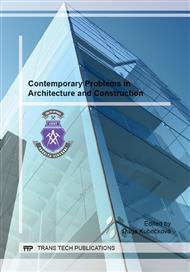p.405
p.411
p.415
p.423
p.429
p.435
p.441
p.447
p.451
Analysis of Load of the Tunnel Definitive Lining due to Vibrations of Various Sources
Abstract:
The development of railways brought a great era of tunnel construction in the 19th century. One of the greatest obstacles for the railway between Bohumín and Žilina was the Jablunkov Pass. In 1869 the excavation of the first Jablunkov Tunnel started. In 1914 the second one came. However in the era of modern railway corridors these tunnels are no longer satisfactory, so a process of their modernisation was launched. Eventually the second tunnel was re-bored as a two-track tunnel. In 2007 the construction started, but in 2009 an exceptional event occurred, which significantly delayed the whole construction work. During the subsequent clearing of the cave-in a part of the tunnel from the northern portal remained in its definitive lining. Another part was temporarily secured with a concrete plug, while the original primary lining was reinforced with a railway bridge pier (PIŽMO). To get through the caved-in section and the concrete plug it was necessary to deploy blasting too. This created an opportunity to perform a unique experimental measurement of the impact of vibrations on the definitive lining from various sources (blasting and hydraulic demolition hammer). The generated vibrations might negatively affect the already finished definitive lining. All measurements were performed in amplitude and frequency area and the results were drawn as attenuation curves corresponding to the propagation of vibrations through the definitive lining construction.
Info:
Periodical:
Pages:
429-434
Citation:
Online since:
October 2014
Authors:
Price:
Сopyright:
© 2014 Trans Tech Publications Ltd. All Rights Reserved
Share:
Citation:


